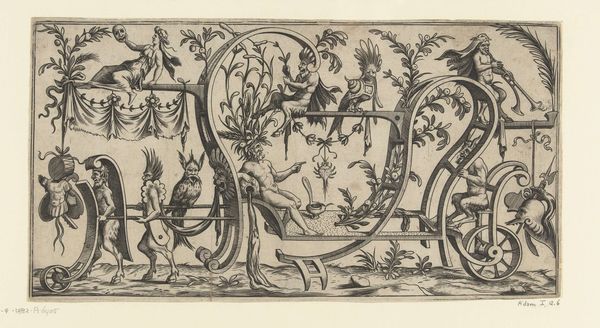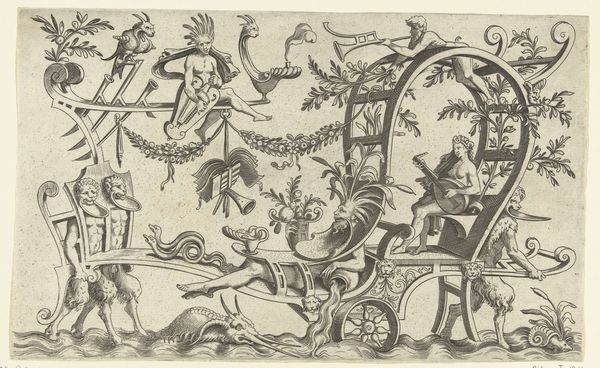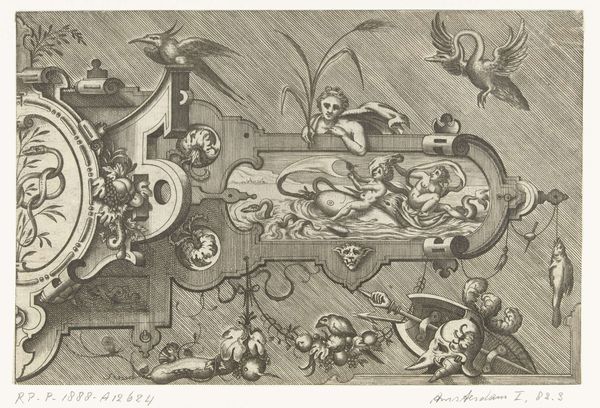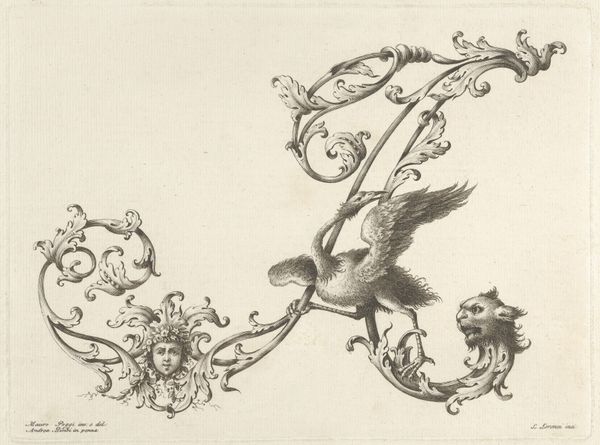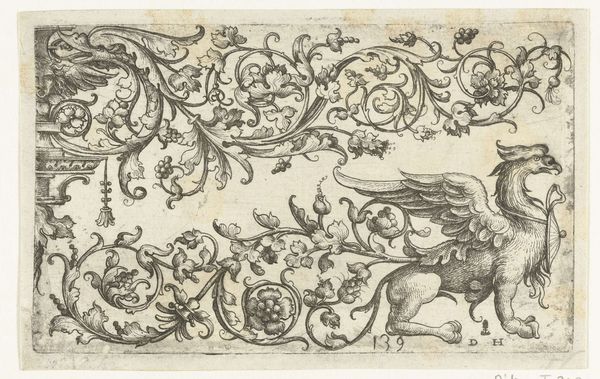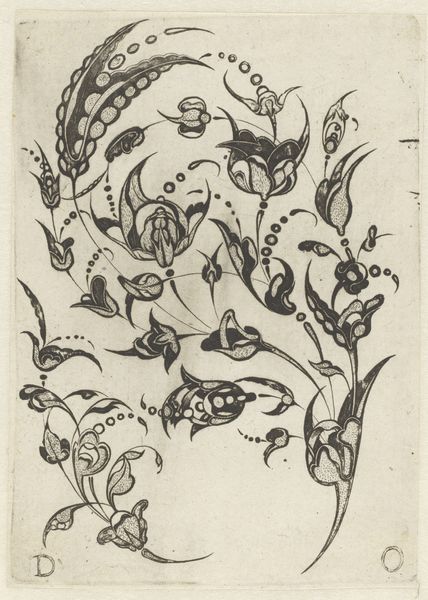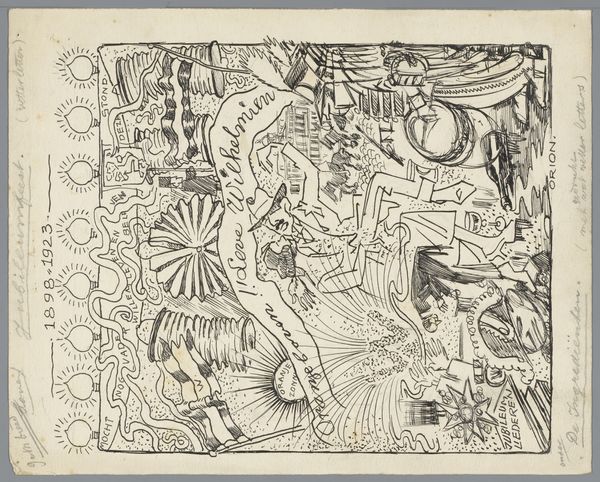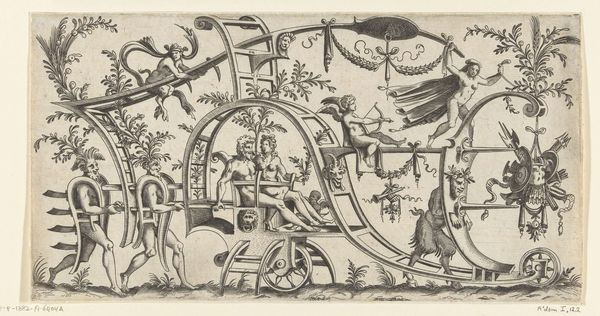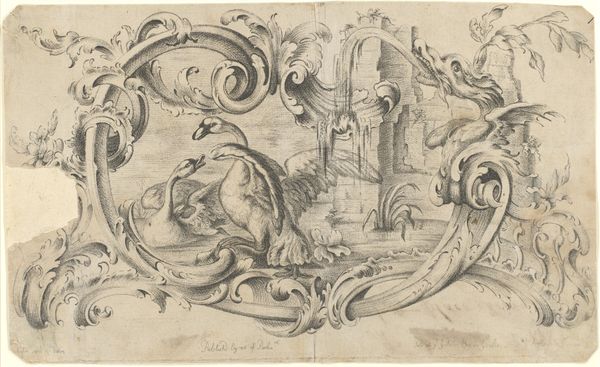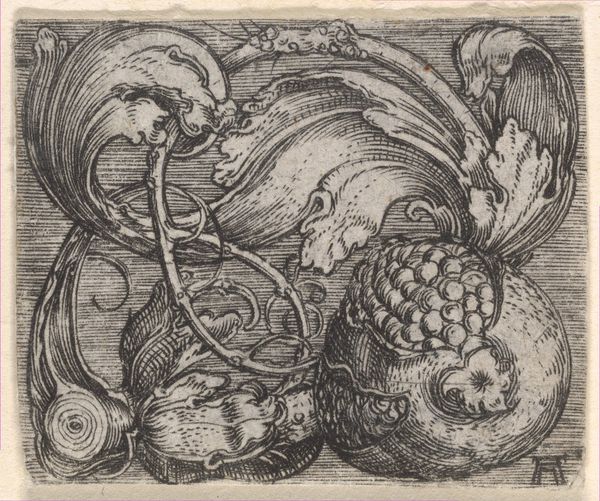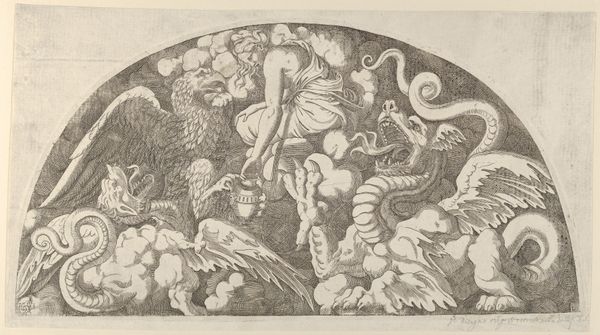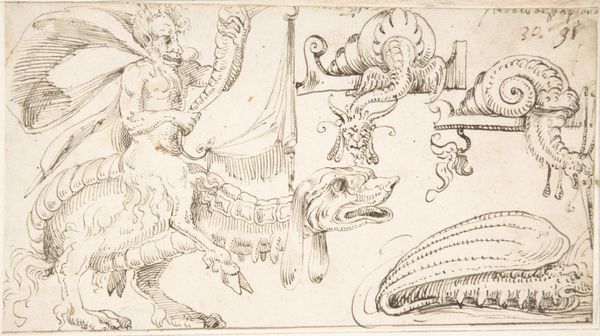
drawing, ink, engraving
#
drawing
#
allegory
#
pen drawing
#
pen illustration
#
pen sketch
#
mannerism
#
figuration
#
ink line art
#
11_renaissance
#
ink
#
history-painting
#
engraving
Dimensions: height 168 mm, width 260 mm
Copyright: Rijks Museum: Open Domain
Curator: This artwork is entitled "Triumphwagen met saters en vrouwenfiguren," or "Triumphal chariot with satyrs and female figures." Created around 1550, this engraving, rendered in ink, is currently held in the Rijksmuseum. What strikes you first about it? Editor: There's an unsettling dynamism here. While technically skilled, the pen strokes almost feel feverish, the allegorical figures frozen mid-gesture in a chaotic tableau. The cart seems on the verge of collapse! Curator: Mannerism is precisely that: artifice over naturalism. Note how the figures inhabit distorted, elongated proportions. They populate this complex structure like jewels in an elaborate setting. What symbolic reading can we apply here? Editor: The triumphal chariot is a symbol of power, surely. But the figures, mostly satyrs and women, pull in different directions, seemingly indifferent to the journey. Who commands the power, and to what end is this triumph? This artwork perhaps underscores a Renaissance skepticism towards unchecked power. It lacks moral stability. Curator: Indeed. See how the formal arrangement uses asymmetry and dissonance to challenge classical harmony. The eye struggles to find a singular focal point—is it the central satyr lounging precariously, or perhaps the poised women with their knowing gazes? These deliberately conflicting viewpoints undermine the very idea of a unified 'triumph'. Editor: It also evokes the violence enacted on the female body as both the vehicle and ornamentation for male 'triumph', whether desired or not. It strikes me how these women are presented more as objects, props to masculine pursuits of prestige. Their supposed serenity feels utterly brittle. Curator: A valid interpretation. In terms of artistic impact, its complex line work generates a kind of visual excess. Editor: True. Overall, this Mannerist approach reminds us that there's a darker underbelly to all triumphalism. It leaves a distinctly sour aftertaste, and I wonder if the artist intended that. Curator: Undoubtedly so, making it an insightful meditation on the anxieties of the Renaissance.
Comments
No comments
Be the first to comment and join the conversation on the ultimate creative platform.
